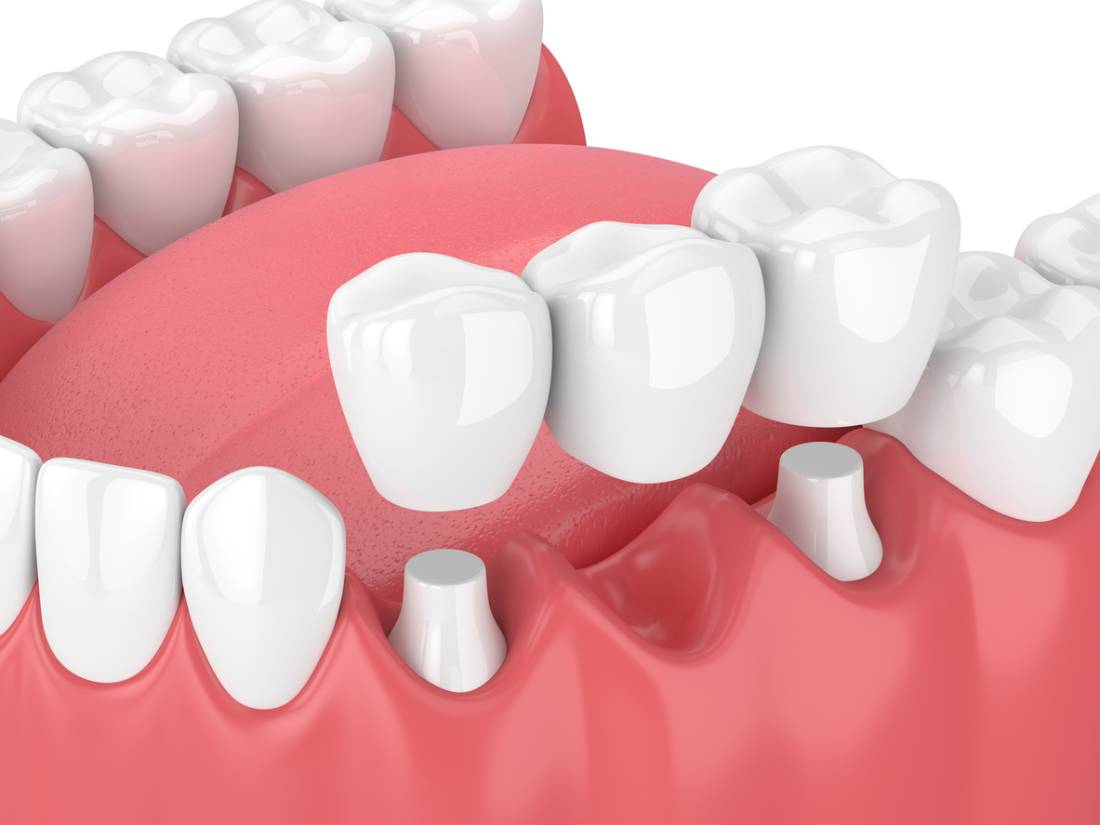Having an effective oral hygiene routine is essential when a person has dental bridges, as bacteria and food debris can accumulate under the bridge, causing bad breath, a persistent unpleasant taste in the mouth, and gum disease. But how do you floss with a dental bridge? Please read our article, in which we discuss effective dental bridge flossing techniques and mention other dental bridge care tips.
How Do You Floss with a Dental Bridge?
It is true that flossing with a dental bridge can be challenging and requires some time to get used to it and develop effective techniques. Typically, there is a gap between the bridge and the gumline, and you need to carefully reach this area with floss and remove all the food debris and plaque that get trapped there during the day. When doing so, avoid being too harsh and avoid sudden movements so as not to harm the gum.
We also recommend asking your dentist to demonstrate proper flossing techniques with a dental bridge during your next appointment. Your dentist can guide your movements as you practice flossing.
There are also some tools available that might help you floss with your dental bridge:
A Floss Threader
A floss threader is an inexpensive device that can be purchased over the counter. It can be used in combination with any floss of your choice. A floss threader helps you get the floss underneath the bridge more easily and without hurting the gums. Once the floss is underneath the bridge, you can floss normally.
Interdental Brushes
Interdental brushes are much smaller than traditional brushes and can be used to clean between the teeth and underneath a dental restoration. Ask your dentist to help you choose the suitable size of an interdental brush.
A Water Flosser
A water flosser is an excellent device to add to the oral hygiene routine for people with any dental restoration. However, remember that it is recommended to use a water flosser in addition to traditional brushing and flossing. It can boost your hygiene routine but cannot replace traditional tools.
This device works by sending a pressurized stream of water through a thin tube. The water effectively loosens food debris and plaque and helps you clean hard-to-reach spots, such as underneath a dental bridge.
Other Oral Hygiene Tips For People with Dental Bridges
Brush Your Teeth Twice a Day with a Fluoride Toothpaste
Brushing your teeth twice a day for at least two minutes cannot be overestimated. It is the number one tool for preventing and fighting all sorts of oral health issues. Choose fluoride toothpaste and a brush of suitable hardness. Fluoride is proven to be highly effective at remineralizing the enamel of your teeth, thus strengthening them and making them more resilient to bacteria. Ask your dentist for products that best suit the condition of your teeth and gums.
When brushing, clean your teeth on the front, back, and along the chewing surface. Pay special attention to areas at the back of your mouth and along the gumline to prevent plaque accumulation in periodontal pockets.
If you use a water flosser in your oral routine, do it before brushing. This will boost the effectiveness of your fluoride toothpaste.
Visit Your Dentist Regularly for Checkups and Professional Cleanings
Maintaining impeccable oral hygiene might be challenging even for people without dental restorations, as bacteria and food debris tend to linger in hard-to-reach areas of the mouth. Therefore, regular professional dental cleanings can be highly beneficial, especially if you have dental restorations, such as dental bridges, which increase the risk of bacteria, plaque, and tartar accumulation.
During a professional dental cleaning, your doctor will use special tools to effectively clean around and underneath the bridge. As a result, gum disease, bad breath, and tooth decay are less likely to develop. On top of that, during cleaning, your doctor will check the condition of your teeth and the bridge to make sure that there are no issues that require medical attention.
We also recommend getting a professional fluoride treatment after the cleaning. Fluoride treatment helps fight bacteria in the mouth, reducing the risk of gum disease and cavities.
It is recommended to visit your dentist for professional cleanings and checkups every 6 months.
Make an Appointment Today
If you need dental bridge services, do not hesitate to make an appointment at Tropic Dental Care. Our cosmetic dentistry specialists use high-quality materials and modern dental techniques to deliver the best results to our patients. We look forward to your visit.



